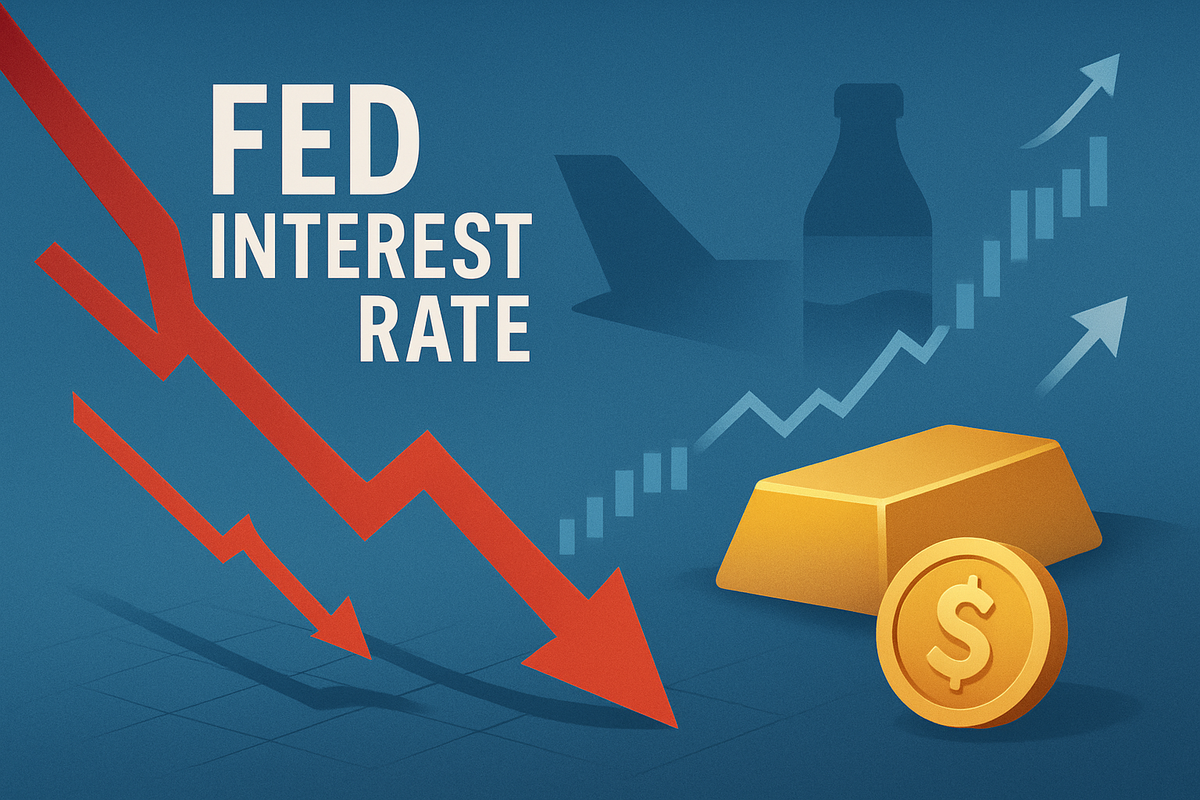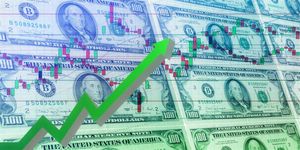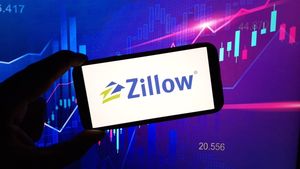
October 9, 2025 – The financial landscape is experiencing a significant recalibration as the Federal Reserve has embarked on a cycle of interest rate reductions, with the first cut in September 2025 already in the rearview mirror. Market participants are now bracing for, and indeed largely expecting, another 25-basis-point reduction at the upcoming Federal Open Market Committee (FOMC) meeting later this month. This shift from a tightening to an easing monetary policy is sending ripples across asset classes, influencing everything from the price of gold to the strategic outlooks for major U.S. corporations like Delta and PepsiCo.
The Fed's decision to pivot towards lower rates is primarily a proactive measure to support a softening U.S. labor market, which has shown signs of slower job creation and stabilizing wage growth in recent months. While inflation remains slightly above the Fed's 2% target, policymakers view it as manageable, anticipating a gradual return to target levels. This environment of cautious optimism, however, is tempered by the Fed's data-dependent stance and the recent government shutdown, which has complicated the release of critical economic data, leaving some investors navigating a more opaque economic picture.
The Fed's Easing Stance: A Detailed Look at the Shift
The Federal Reserve initiated its current easing cycle with a 25-basis-point rate cut in September 2025, bringing the federal funds rate to a range of 4.00%-4.25%. This marked the first reduction since December 2024 and was widely interpreted as a "risk management cut" aimed at bolstering the labor market and preventing a deeper economic slowdown. As of October 2025, market probabilities, ranging from 94.6% to 99%, overwhelmingly suggest another similar cut is imminent at the FOMC meeting scheduled for October 28-29, which would further lower the rate to 3.75%-4.00%.
The timeline leading up to this moment has been characterized by evolving economic indicators. Weaker-than-expected nonfarm payroll reports and other employment data have signaled a cooling of the once-robust labor market. Key players, including Fed Chairman Jerome Powell and various FOMC members, have publicly indicated a willingness to continue easing over the next three to six months, aligning with the FOMC's own September projections that forecast further reductions into December 2025 and potentially 2026. Initial market reactions to the September cut were largely positive, with major U.S. equity indices experiencing strong gains, fueled also by enthusiasm for artificial intelligence and resilient corporate earnings. However, this optimism is underpinned by a recognition of the Fed's data-driven approach, meaning future decisions remain contingent on incoming economic reports, which have been somewhat delayed by the recent government shutdown.
Corporate Winners and Losers in a Lower Rate Environment
The shift to lower interest rates has profound implications for various sectors and individual companies, creating both opportunities and challenges. Generally, a lower rate environment is seen as a boon for the broader U.S. stock market, as reduced borrowing costs can enhance corporate profitability and stimulate economic activity. Companies benefit from cheaper financing for expansion, operations, and debt refinancing, which can translate into improved earnings and higher stock valuations. However, some analysts caution that current market valuations are already elevated, particularly in concentrated technology sectors, suggesting a need for selective investment.
For gold, the anticipated and ongoing rate cuts typically act as a significant tailwind. As interest rates decline, the opportunity cost of holding non-yielding assets like gold decreases, making it a more attractive investment. Furthermore, lower rates often weaken the U.S. dollar, which makes dollar-denominated gold cheaper for international buyers, thereby increasing demand. In periods of economic uncertainty, which can sometimes accompany rate-cutting cycles, gold also tends to perform well as a safe-haven asset.
Airline companies, such as Delta Air Lines (NYSE: DAL), are poised to benefit from several angles. Lower interest rates directly reduce the cost of financing new aircraft purchases and other capital expenditures, which are substantial in the airline industry. Additionally, reduced borrowing costs for consumers can lead to increased discretionary spending, potentially boosting demand for travel. A stronger economy spurred by rate cuts could also translate to higher business travel volumes.
Conversely, PepsiCo (NASDAQ: PEP), a giant in the consumer staples sector, might experience a more nuanced impact. While lower borrowing costs would benefit PepsiCo's operations and potential acquisitions, the direct impact on consumer demand for its essential food and beverage products might be less dramatic compared to discretionary sectors. However, a weaker U.S. dollar, a potential outcome of sustained rate cuts, could positively impact PepsiCo's significant international sales by making foreign earnings more valuable when converted back to dollars.
Broader Economic Ripple Effects and Historical Context
The Federal Reserve's pivot to an easing monetary policy marks a significant juncture with widespread implications for the broader economy and financial markets. Beyond the immediate impact on corporate balance sheets and asset prices, lower interest rates are expected to stimulate economic activity by reducing borrowing costs for consumers across the board, affecting mortgages, auto loans, and credit card rates. This could inject renewed momentum into the housing and real estate sectors, although experts note that mortgage rates are heavily influenced by broader Treasury yields and often price in Fed expectations in advance.
This event fits into a broader trend of central banks globally responding to evolving economic conditions, balancing inflation control with economic growth. The potential for a weakening U.S. dollar, a common outcome of rate-cutting cycles, could enhance the competitiveness of American exports, providing a boost to U.S. companies with significant international operations. However, it could also make imports more expensive. From a regulatory and policy perspective, the Fed's continued emphasis on a data-driven approach means that future policy adjustments will be highly sensitive to incoming economic reports, making the ongoing government shutdown's impact on data availability a critical challenge for policymakers. Historically, periods of Fed easing have often coincided with periods of economic uncertainty or slowdowns, but also frequently precede periods of market recovery and growth, offering a mixed bag of precedents that underscore the current environment's complexity.
The Path Forward: Opportunities and Challenges
Looking ahead, the financial markets are poised for continued shifts as the Federal Reserve navigates its rate-cutting cycle. In the short term, the market's strong anticipation of another rate cut in October 2025 suggests that equities and gold could see further positive momentum, assuming economic data aligns with the Fed's dovish stance. However, the potential for volatility remains, especially if inflation proves more persistent than expected or if the labor market shows unexpected strength, which could cause the Fed to pause or slow its easing.
Longer term, the sustained lower interest rate environment is expected to encourage capital expenditure and investment across various industries, fostering economic growth. Companies that are highly leveraged or require significant capital for expansion, like those in manufacturing, infrastructure, or technology, could find strategic opportunities for growth and innovation. Conversely, sectors traditionally reliant on higher interest rates, such as certain parts of the financial industry, might face headwinds. Investors should consider diversifying their portfolios to mitigate risks associated with elevated valuations in specific sectors and to capitalize on opportunities emerging from the changing economic landscape. Potential scenarios range from a smooth, growth-supportive easing path to a more challenging environment if external shocks or unexpected economic data disrupt the Fed's plans.
Concluding Thoughts on a Pivotal Market Moment
The Federal Reserve's current cycle of interest rate cuts, initiated in September 2025 and likely to continue, marks a pivotal moment for financial markets and the broader economy. The shift from monetary tightening to easing is a strategic response to a softening labor market, aimed at sustaining economic growth while managing inflation. Key takeaways include the immediate positive impact on equity markets, the enhanced appeal of gold, and varied implications for corporate entities like Delta Air Lines (NYSE: DAL) and PepsiCo (NASDAQ: PEP), depending on their sector and financial structure.
Moving forward, the market will remain highly sensitive to the Fed's communications and incoming economic data, particularly employment figures and inflation reports. Investors should watch for any signs of divergence from the current anticipated easing path, as well as global economic developments that could influence the Fed's decisions. The lasting impact of this rate-cutting cycle could be a re-energized economy, but also a reshaped investment landscape where careful sector selection and diversification will be paramount. This period underscores the dynamic nature of monetary policy and its profound influence on investment strategies and corporate performance.
This content is intended for informational purposes only and is not financial advice





